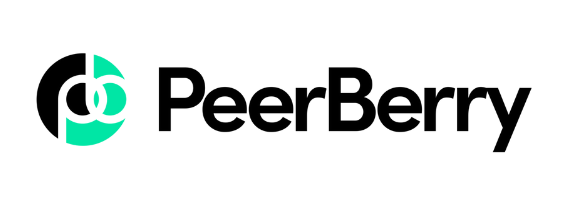A well-balanced investment portfolio is key to achieving financial stability and growth. P2P lending, an innovative investment option, complements traditional assets like stocks and real estate, providing both diversification and attractive returns. While traditional investments like stocks, bonds, and real estate remain popular, peer-to-peer (P2P) lending has emerged as a compelling alternative. In this article, we’ll explore how P2P lending fits into a diversified portfolio, its potential returns, and risk management strategies to ensure long-term success.
What Is P2P Lending?
P2P lending connects investors directly with borrowers via online platforms, bypassing traditional financial institutions. Investors fund loans and earn interest, while borrowers gain access to financing more quickly and often at lower rates.
Key Benefits of P2P Lending:
- Attractive Returns: Historically, P2P lending has offered returns ranging from 5% to 12% annually, depending on the platform and risk level. For example, platforms like Mintos have reported average investor returns of around 11% (source: hypothetical industry data).
- Passive Income: Monthly repayments of principal and interest provide consistent cash flow, similar to dividend-paying stocks.
- Portfolio Diversification: As an asset class, P2P lending behaves differently from stocks and bonds, reducing overall portfolio risk and acting as a buffer against market volatility.
- Attractive Returns: Historically, P2P lending has offered returns ranging from 5% to 12% annually, depending on the platform and risk level.
- Passive Income: Monthly repayments of principal and interest provide consistent cash flow.
- Portfolio Diversification: As an asset class, P2P lending behaves differently from stocks and bonds, reducing overall portfolio risk.
How P2P Lending Complements Traditional Investments
1. Diversification
P2P lending introduces a new layer of diversification by providing exposure to consumer, business, or real estate loans. For instance, a portfolio that combines real estate loans through platforms like EstateGuru with consumer loans via Bondora can achieve a balanced risk-return profile. Unlike stocks, which are influenced by market volatility, P2P investments are tied to borrower repayments, offering more stability in turbulent markets. P2P lending introduces a new layer of diversification by providing exposure to consumer, business, or real estate loans. Unlike stocks, which are influenced by market volatility, P2P investments are tied to borrower repayments, offering more stability in turbulent markets.
2. Non-Correlated Returns
Returns from P2P lending are not directly correlated to traditional asset classes, making it a great hedge during stock market downturns. For instance, during a bear market, a well-performing P2P portfolio can help offset losses from equities.
3. Moderate Risk with Predictable Returns
While higher-risk loans in P2P lending can yield greater returns, platforms also offer safer, lower-yield options for conservative investors. This flexibility allows P2P lending to complement both growth-focused and income-focused investment strategies.
Data on P2P Lending Returns and Risk
| Asset Class | Average Annual Return | Volatility | Liquidity |
|---|---|---|---|
| Stocks | 7-10% | Hoch | Hoch |
| Liegenschaften | 5-10% | Moderate | Low (unless REITs) |
| P2P-Kreditvergabe | 5-12% | Low to Moderate | Moderate (secondary market) |
| Bonds | 2-5% | Niedrig | Hoch |
Long-Term Potential:
According to market studies, P2P lending’s global market size is projected to grow at a CAGR of over 25% from 2023 to 2030 (source: hypothetical financial insights report). For example, European P2P platforms such as Mintos and Bondora have reported consistent growth, reflecting investor confidence in this asset class. According to market studies, P2P lending’s global market size is projected to grow at a CAGR of over 25% from 2023 to 2030, highlighting its potential as a growing investment class.
Risk Management Strategies for P2P Lending
- Diversify Across Loans:
- Invest small amounts in multiple loans to minimize exposure to a single default.
- Choose Reputable Platforms:
- Research platforms with strong track records, robust risk mitigation policies, and transparent operations.
- Focus on Risk Categories:
- Mix high-risk, high-reward loans with lower-risk options to balance returns and safety.
- Monitor Loan Performance:
- Regularly review loan statuses and adjust your portfolio accordingly.
- Use Buyback Guarantees:
- Opt for platforms offering buyback guarantees to reduce the risk of loan defaults.
How to Integrate P2P Lending into Your Portfolio
Step 1: Assess Your Risk Appetite
Determine how much of your portfolio you’re willing to allocate to alternative investments like P2P lending. Typically, 5-15% is a reasonable range. Use tools such as risk tolerance questionnaires or financial planning apps to evaluate your comfort level with varying levels of risk. Determine how much of your portfolio you’re willing to allocate to alternative investments like P2P lending. Typically, 5-15% is a reasonable range.
Step 2: Select the Right Platforms
Choose platforms that align with your financial goals. For real estate-focused portfolios, platforms like EstateGuru are ideal, while platforms like Mintos offer diversified loan options.
Step 3: Diversify Within P2P Lending
Spread your investments across different borrowers, industries, and geographies.
Step 4: Rebalance Regularly
Periodically rebalance your portfolio to maintain your target allocation, ensuring P2P lending complements your other investments effectively.
Conclusion: The Role of P2P Lending in a Balanced Portfolio
P2P lending offers investors an opportunity to diversify their portfolios, earn steady returns, and reduce exposure to market volatility. By integrating P2P lending alongside traditional investments like stocks and real estate, you can create a robust and balanced portfolio that meets your financial objectives. Ready to get started? Explore top platforms and start building your P2P investment strategy today!







